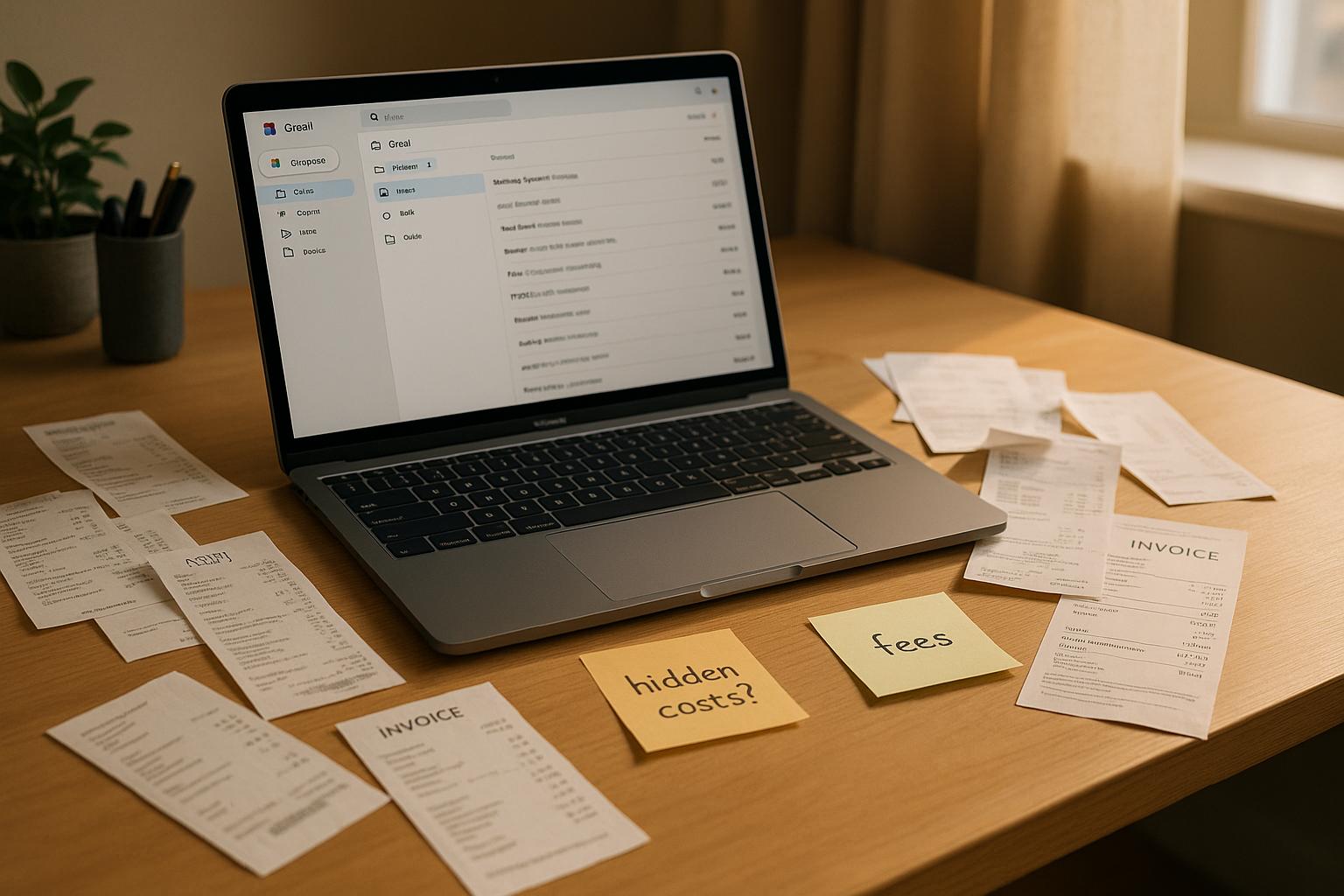Psychographic segmentation helps you understand why your audience behaves the way they do by focusing on their values, interests, and motivations - not just age or location. This deeper insight allows you to create personalized email campaigns that connect on a meaningful level. Here's how it works:
- What It Is: Psychographic segmentation analyzes traits like lifestyle, values, and personality to tailor your messaging.
- Why It Matters: Unlike demographics, it explains the motivations behind customer actions, helping you craft highly relevant content.
- Email Benefits:
- Better targeting based on what your audience cares about.
- Higher open, click, and conversion rates.
- Stronger, long-term customer relationships.
Quick Comparison: Demographics vs. Psychographics
| Aspect | Demographics | Psychographics |
|---|---|---|
| Focus | Age, gender, income | Values, interests, lifestyle |
| Insight Type | Surface-level characteristics | Deeper motivations |
| Marketing Use | Broad targeting | Personalized messaging |
Main Advantages for Email Campaigns
Better Message Targeting
Psychographic segmentation allows you to tailor email content based on values, interests, and lifestyles. For instance, if your audience includes environmentally conscious subscribers, your emails could highlight eco-friendly product features, carbon reduction efforts, sustainable packaging, or certifications. This approach creates a stronger connection with your audience and naturally boosts engagement rates.
Higher Response Rates
Customized segmentation leads to better results - more opens, clicks, and conversions, while also reducing unsubscribes. When emails reflect the preferences and priorities of your audience, they’re more likely to engage with your content.
Building Customer Relationships
Personalized messaging does more than boost short-term engagement - it helps create deeper, long-lasting connections. Psychographic segmentation plays a role in strengthening customer relationships by focusing on:
- Value Alignment: Showcasing initiatives that reflect your audience’s core values builds trust. For example, highlighting charitable efforts can resonate with socially conscious subscribers.
- Interest-Based Content: Delivering content that matches your audience’s interests keeps them engaged. Tech enthusiasts might appreciate early access to new features, while budget-conscious readers might value exclusive discounts.
- Lifestyle Integration: Adjusting email timing and frequency to fit your audience’s routines shows you respect their preferences. For example, scheduling emails for early mornings can appeal to subscribers who are most active during that time.
This level of personalization helps subscribers feel understood, fostering loyalty and long-term relationships.
Data Collection Methods
Customer Surveys
Short, focused surveys can help gather details about your audience, such as:
- Lifestyle habits: Daily routines, hobbies, and leisure activities.
- Purchase drivers: What motivates buying decisions.
- Core beliefs: Values and principles that influence behavior.
When paired with tracking data, these insights provide a clearer picture of who your customers are.
Digital Behavior Tracking
Digital interactions often reveal insights that go beyond direct feedback. Key areas to monitor include:
Website Analytics
- Pages visited and time spent on each.
- Preferred content types.
- Overall browsing patterns.
Email Engagement
- Which links are clicked most often.
- Topics or themes that draw attention.
- Times when users are most active.
Purchase History
- Products or categories frequently bought.
- Average order value.
- Shopping frequency and timing.
- Seasonal buying trends.
External Data Sources
To gain a broader understanding of your audience, supplement your internal data with external research. Sources include:
Market Research Reports
- Broader trends in consumer behavior.
- Lifestyle and spending habits.
- Motivations and values shaping decisions.
Social Media Analytics
- How users engage with your brand.
- Interests shared across your audience.
- Community involvement and discussions.
Industry Studies
- Insights into category-specific habits.
- New trends shaping the market.
- Consumer perspectives and evolving preferences.
Implementation Steps
Building Audience Profiles
To improve targeting and engagement, organize your psychographic data into actionable profiles that highlight key behaviors and motivations:
Values-Based Segments
- Customers focused on eco-friendly products
- Budget-conscious shoppers looking for deals
- Tech enthusiasts interested in cutting-edge solutions
- Quality-focused buyers willing to pay premium prices
Lifestyle Categories
- Busy professionals with limited time for shopping
- Health and wellness advocates
- Tech-savvy early adopters
- Shoppers who prefer familiar, trusted brands
Once these profiles are established, craft messaging that aligns with each group's priorities and interests.
Content Customization
Personalize your emails by adjusting subject lines, designs, and calls-to-action to match the preferences and needs of each audience segment. Focus on using language, visuals, and layouts that directly address their pain points and goals.
Subject Lines
- Use a tone and style that resonates with the segment
- Highlight topics or interests that matter to them
- Offer direct solutions to their specific challenges
Email Design
- Incorporate visuals that reflect the segment’s lifestyle
- Adjust color schemes to align with their preferences
- Design layouts suited to their reading habits
Call-to-Action
- Use button text that speaks to their goals
- Place offers strategically for maximum impact
- Provide incentives that align with their values
Once your content is tailored, schedule emails to reach your audience when they're most likely to engage.
Send Time Optimization
Optimize delivery times based on the habits of each segment:
Time Zones
- Schedule emails to arrive during local working hours
- Consider workday vs. weekend routines
- Adjust for regional differences in timing
Activity Patterns
- Track when engagement is highest
- Analyze response rates for different time slots
- Fine-tune frequency for each segment
Seasonal Considerations
- Align campaigns with seasonal trends
- Account for regional timing differences
- Adapt to changes in schedules and lifestyles during holidays or specific seasons
sbb-itb-6e7333f
Stay Competitive in 2024 with These Email Marketing Trends ...
Performance Tracking
Once you've set up your strategies, the next step is to evaluate how well they're working. Tracking performance after implementing segmentation is essential to understand its impact.
Key Metrics to Monitor
Here are some important metrics to measure the success of psychographic segmentation:
- Open Rates: Check how often emails are opened within specific segments to assess their relevance.
- Click-Through Rates (CTR): Analyze how different psychographic groups interact with your content by tracking CTR.
- Conversion Rates: Compare how well each segment converts to identify which audience groups perform best.
- Customer Engagement: Look at metrics like how long content is viewed, how often it's shared, and reply rates to measure engagement levels.
Establish baseline metrics before starting segmentation. Then, track these over time to fine-tune your content and optimize delivery schedules for better results.
Next Steps
Key Points Summary
To succeed with psychographic segmentation, focus on gathering data, understanding your audience profiles, tailoring your content, and keeping an eye on performance metrics. These steps work together to help you connect with your audience more effectively.
Make use of specialized tools to simplify and enhance this process.
Email Service Business Directory Tools
The Email Service Business Directory offers tools designed to make psychographic segmentation easier. Platforms such as Mailchimp and ActiveCampaign excel at segmentation, while AI-driven solutions like Typeface Email Agent help you craft personalized content for different audience groups. More advanced options like HubSpot and Dotdigital allow for detailed customer journey mapping based on behavioral insights.
These tools can be a game-changer as you start your segmentation journey.
Getting Started
Here’s how to begin implementing psychographic segmentation:
- Choose the right email marketing platform: Pick one from the Email Service Business Directory that supports strong segmentation, data collection, and analytics.
- Create audience segments: Use surveys to gather information about your audience's lifestyle and buying motivations. Aim to define 2-3 clear psychographic groups.
- Test and refine: Run A/B tests with tailored content for each segment. Track metrics like open rates and click-through rates to see what works and adjust your strategy accordingly.


